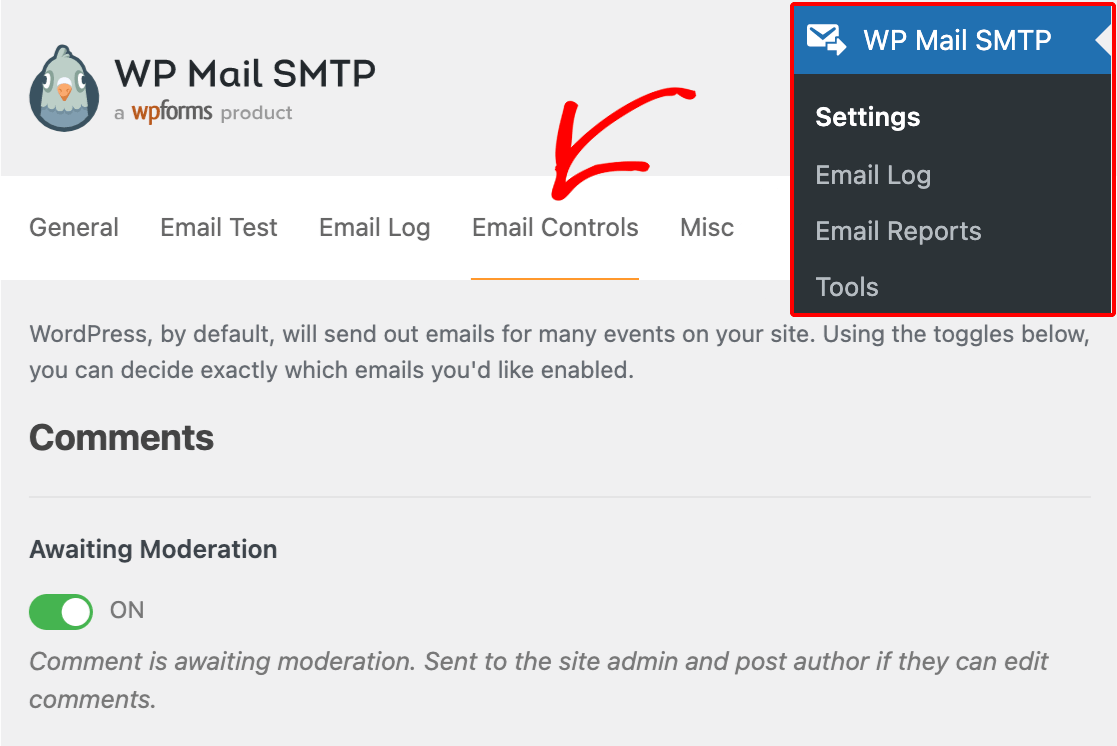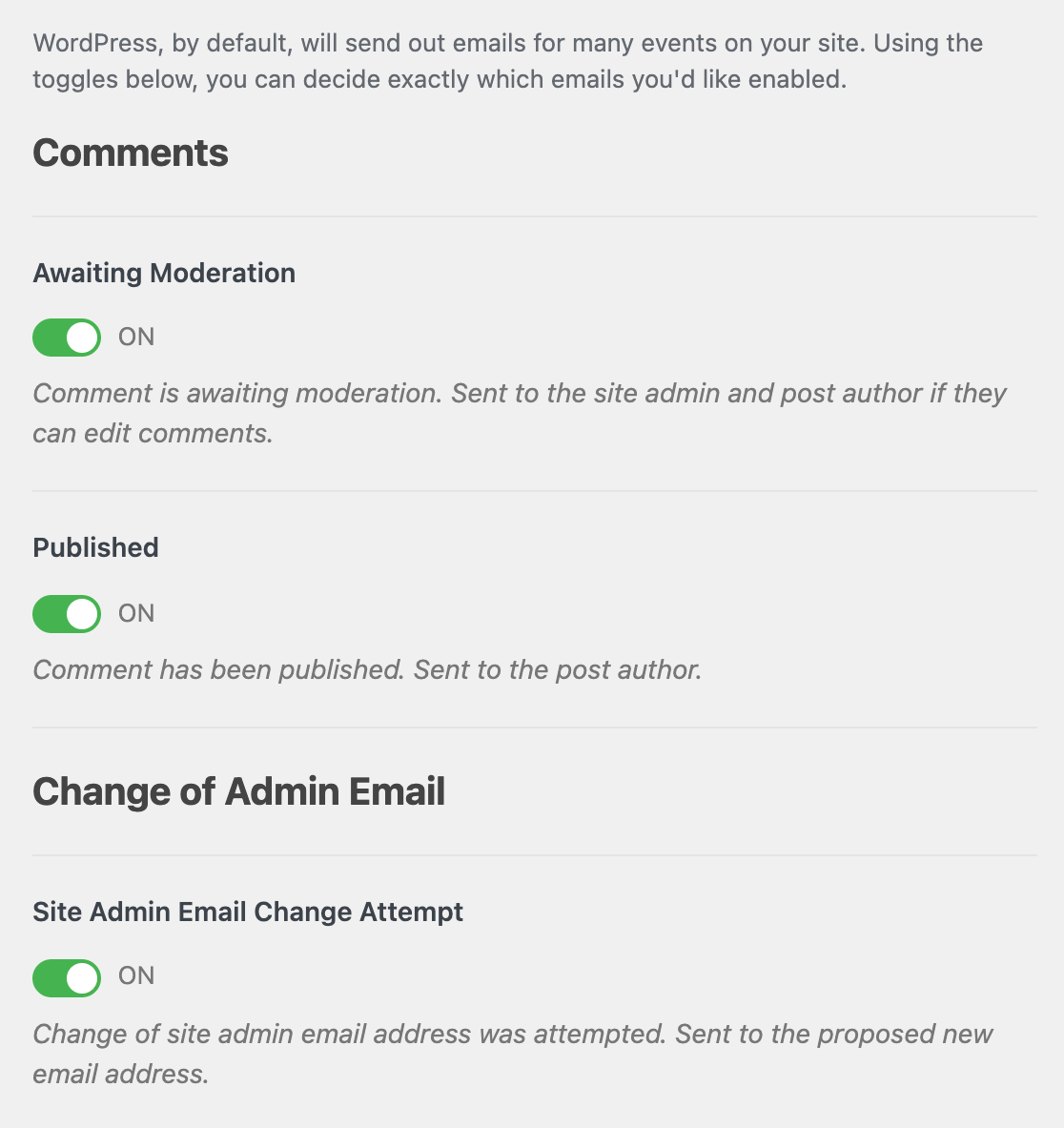Would you like to have control over which emails WordPress core sends out? By default, WordPress will send automated emails for tons of different events on your site. However, in some cases, these emails might be unnecessary or unwanted.
In this tutorial, we’ll show how you can use WP Mail SMTP to disable any emails you don’t want WordPress to send.
Before you get started, be sure to install and activate WP Mail SMTP on your WordPress site.
In the left WordPress admin menu, go to WP Mail SMTP » Settings. Then click on the Email Controls tab.

On this page, you’ll see a list of all the different emails that WordPress core can send out. You can toggle each of these emails on or off, then save the settings at the bottom of the page.

Note: Some of these settings mention the “site admin” or “admin email.” If you don’t know your site’s admin email, please see WPBeginner’s tutorial on finding your WordPress admin email.
Below, we’ve shared every WordPress core email that can be disabled (or enabled) through these email control settings.
Comments
- Awaiting Moderation: Comment is awaiting moderation. Sent to the site admin and post author if they can edit comments.
- Published: Comment has been published. Sent to the post author.
Change of Admin Email
- Site Admin Email Change Attempt: Change of site admin email address was attempted. Sent to the proposed new email address.
- Site Admin Email Changed: Site admin email address was changed. Sent to the old site admin email address.
Change of User Email or Password
- Reset Password Request: User requested a password reset via “Lost your password?”. Sent to the user.
- Password Reset Successfully: User reset their password from the password reset link. Sent to the site admin.
- Password Changed: User changed their password. Sent to the user.
- Email Change Attempt: User attempted to change their email address. Sent to the proposed new email address.
- Email Changed: User changed their email address. Sent to the user.
Personal Data Requests
- User Confirmed Export / Erasure Request: User clicked a confirmation link in personal data export or erasure request email. Sent to the site or network admin.
- Admin Erased Data: Site admin clicked “Erase Personal Data” button next to a confirmed data erasure request. Sent to the requester email address.
- Admin Sent Link to Export Data: Site admin clicked “Email Data” button next to a confirmed data export request. Sent to the requester email address. Disabling this option will block users from being able to export their personal data, as they will not receive an email with a link.
Automatic Updates
- Plugin Status: Completion or failure of a background automatic plugin update. Sent to the site or network admin.
- Theme Status: Completion or failure of a background automatic theme update. Sent to the site or network admin.
- WordPress Core Status: Completion or failure of a background automatic core update. Sent to the site or network admin.
- Full Log: Full log of background update results which includes information about WordPress core, plugins, themes, and translations updates. Only sent when you are using a development version of WordPress. Sent to the site or network admin.
New User
- Created (Admin): A new user was created. Sent to the site admin.
- Created (User): A new user was created. Sent to the new user.
Once you’ve adjusted these settings, be sure to click the Save Settings button at the bottom of the page to store any changes.

That’s it! You can now disable any unwanted emails from WordPress core.
Next, would you like to keep a record of all the emails sent out from your site? Be sure to check out our email logging feature.
